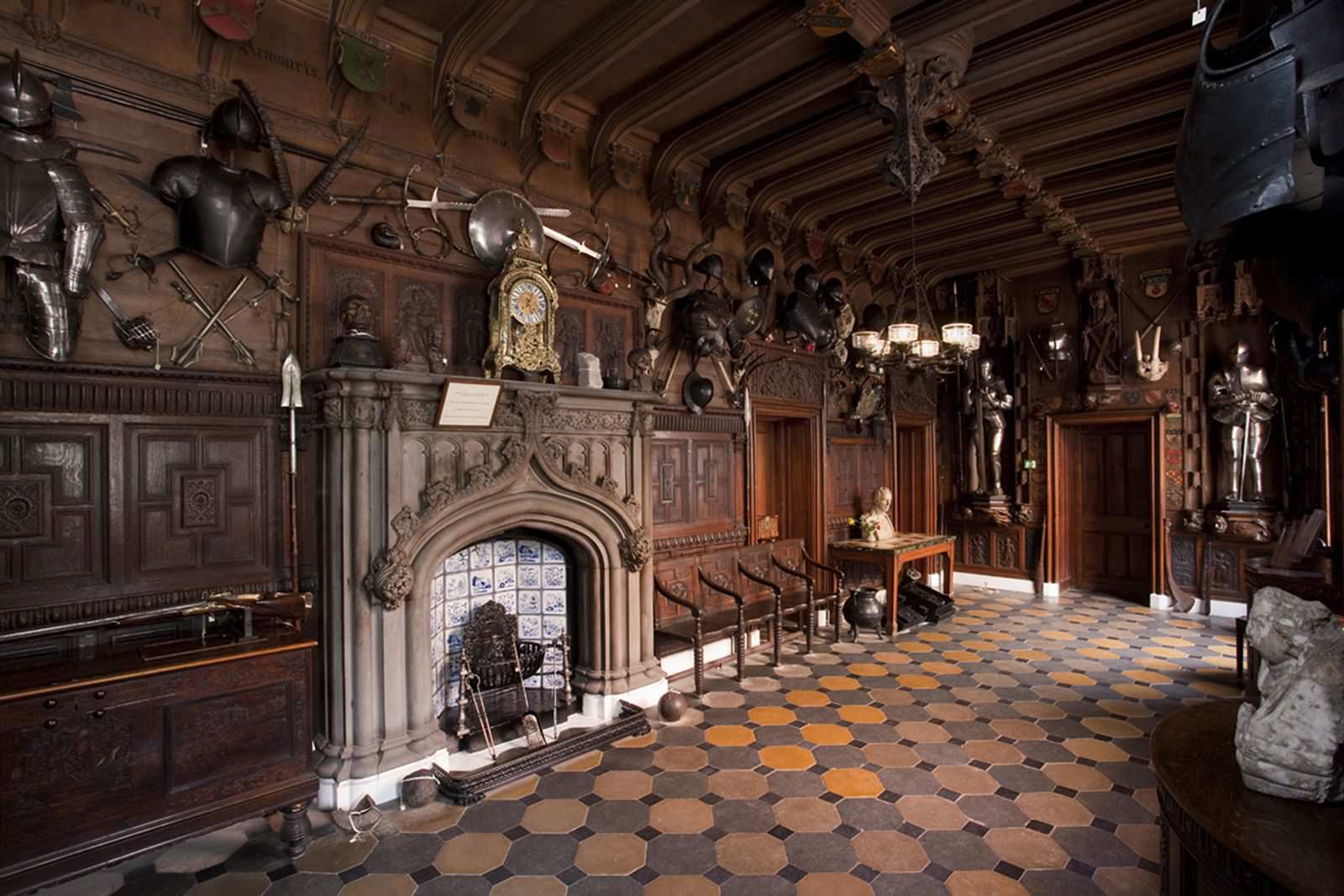Central Indian, last quarter of the 18th century. Shamshir form blade, 30 1/8" long, of broad thick form with beveled edges and slightly raised false edge. The right side struck with a maker’s mark of the peepal tree, the Tree of Life. The blade is noticeably heavy as expected from an example captured in the 18th century and spared the repeated polishing of those preserved in Indian arsenals. Bronze hilt, originally gilt with fully modeled tiger head pommel. The grip or body of the tiger as well as the head of the tiger are covered in the bubri marks, stylized tiger stripes emblematic to Tipu Sultan, The Tiger of Mysore. They were incorporated into the decoration of the things which served Tipu personally including his weapons. See Treasures from India, the Clive Collection at Powis Castle, figure 19 and figure 33 which illustrates some of the booty related to Tipu, returned from the Battle of Serirangapatnam by Robert and Edward Clive, after Tipu’s death. See also the personal sword of Tipu, (profusely published ) which bears a modeled tiger face on the quillon block. That feature is exceptionally rare on Indian swords which virtually always carry the same decoration from pommel to langet. The present sword bears a floral decoration of the same configuration as the tiger face, with a centered radiant crescent, significant as Tipu was Muslim. This sword was directly associated with Tipu and probably carried by his personal guard. It almost certainly was captured at the Battle of Seringapatam in 1799, where Tipu fell mortally wounded and his troops were defeated, ending French adventurism in India. Doubly important for its Napoleonic context. Provenance: Collection of Sir Frank Bowden at Thame Park, Oxfordshire England. The esteemed English collector and dealer Robin Wigginton, was probably the most avid modern collector of Tipu related items





















